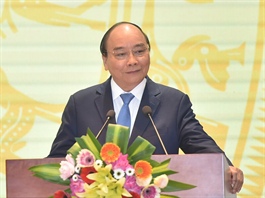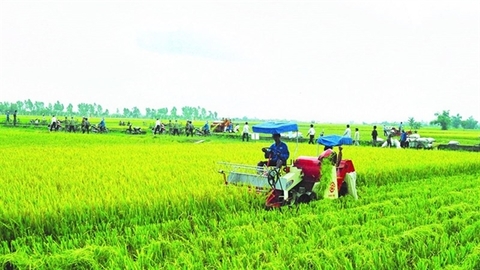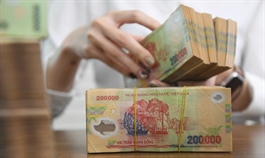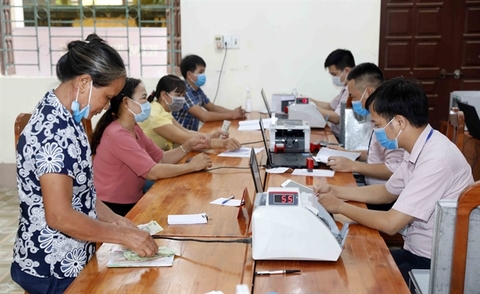Reliable strategies required
Reliable strategies required
As a year full of economic ups and downs is coming to an end, investors are looking for the light at the end of the tunnel, represented by the long-awaited COVID-19 vaccines across the globe. Tran Minh Hoang, head of research at Vietcombank Securities, outlines some observations and predictions for forthcoming exchange rates, interest rates, and some noteworthy investment hints for 2021.
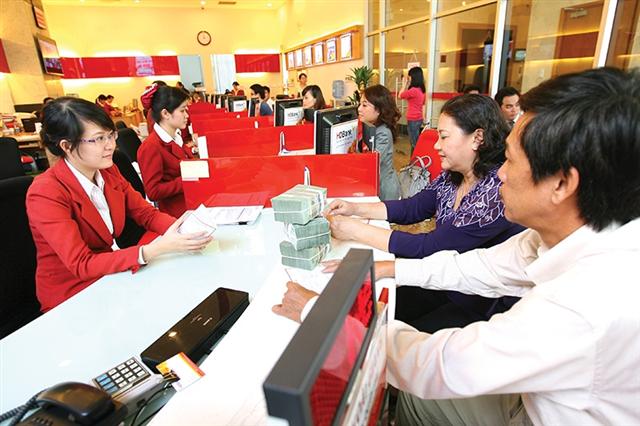
Deposit rates are expected to decrease further, before stabilising at low levels, photo Le Toan
|
Exchange rates are expected to have stable movements, as the supply of foreign currency is abundant in the context of direct and indirect investment flows and positive remittances. Moreover, trade balance is forecasted to continue with a large surplus. Following the trend of loosening monetary policies of central banks in the world, cash flows are likely to brighten up Vietnam’s macroeconomic stability. Though uncertainty is present more than ever around the world, investors have become accustomed to the fact that uncertainties always exist and adapt to these events.
The State Bank of Vietnam (SBV) still shows a flexible and consistent policy to support and stabilise the macroeconomy and exchange rates. However, as global movements remain somewhat unpredictable, exchange rates may be under certain pressure around volatile events, possibly fluctuating no more than 2 per cent for the whole year 2021, according to our recent prediction.
The orientation of the SBV towards commercial banks, both applicable for local and foreign lenders, is expected to continue, focusing on quality instead of increasing outstanding loans. Therefore, credit growth is expected to increase slower than in 2016 and 2017, but nearly equivalent to 2018-2019.
Accordingly, credit will focus on institutions with good assets, such as Techcombank and Vietcombank. We expect deposit rates to decrease further, then stabilise at low levels. Central banks over the world are expected to maintain loosening their monetary policies for a long time.
In Vietnam, one of the SBV’s important directions is to reduce interest rates and spend resources to deal with bad debts. The increasing trend of deposit rates from the previous years mainly came from mobilising to adapt safety ratios, attracting customers, and the need for credit loans sources.
By 2021, under the management of the SBV, credit will focus on quality, thus increasing interest rates are unlikely to return. Upward pressure on deposit rates may appear at the end of the year, when banks promote lending activities and businesses and citizens tend to withdraw money from the system. However, we believe that this pressure will not be large, and credit for the whole year is forecast to increase by 11-12 per cent, lower than the in the 2016-2017 period.
So far, 2020 has witnessed many ups and downs in global economies and stock markets due to the impacts of the pandemic. We believe that what happened potentially leaves over many negative consequences in 2021. On the other hand, Vietnam’s economy remains stable, highlighted by optimistic growth and reasonable inflation and exchange rates. Moreover, low interest rates globally open up many investment opportunities in industry-leading companies which are also the main driving force behind the growth of Vietnam’s stock market in the long run.
We believe that investment opportunities in 2021 will lean to basic industries serving as essential inputs for the economic growth in Vietnam for the time to come.
The shift of global supply chains, the industrialisation, and digitalisation of the domestic economy will all require essential inputs, such as electricity, construction materials, and agricultural products. These sectors also benefit from the Vietnamese government’s public investment in building new infrastructure projects and upgrading existent ones, as well as the overall recovery of the domestic demand. Companies that support the increase of trade with global partners thanks to recently signed free trade agreements also support the shift of manufacturing chains from China to other countries with more competitive labour costs, which includes Vietnam.
Although it seems contrary to the investment opinion that we outline above, we also want to emphasise on companies which introduce and apply new technologies to day-to-day business operations. The application of advanced technologies in business, including the digitalisation of the Vietnamese economy, is inevitable and irreversible. Therefore, even though changes from old to new always bring about risks, the potential positive outcomes, which are the improvements of productivity, business performance, and resource usage efficiency, still outweigh the risks caused by the transition process.



